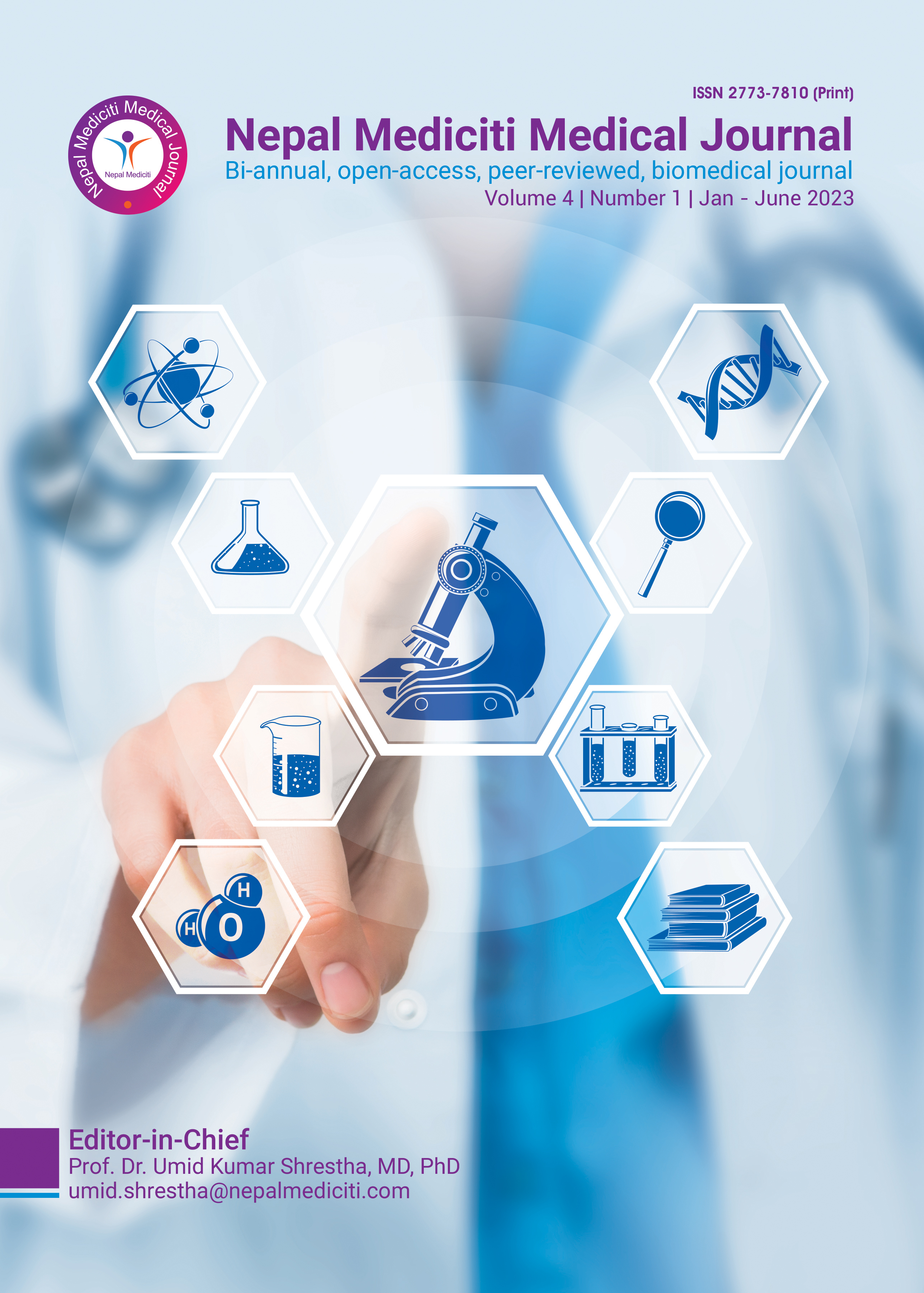Study of Percutaneous transvenous mitral commissurotomy outcomes in valves with different Echocardiographic features
DOI:
https://doi.org/10.3126/nmmj.v4i1.57111Keywords:
PTMC, Echocardiographic features, valves, outcomesAbstract
BACKGROUND Percutaneous transvenous mitral commissurotomy (PTMC) is now a standard treatment for suitable mitral stenosis. However all procedures are not always successful or optimal. Despite having so much experience on the procedure the prediction as which types of valves give good results after PTMC is not very much defined.
METHODS Initial sixty patients of PTMC of Shahid Gangalal hospital (18 male, 42 female), age ranging from 13 to 65 years, mean age 29.9±11.5 years, were studied retrospectively. Their echocardiography data before and after balloon dilatation of mitral valve were collected. The appearance of mitral valve on echocardiogram before PTMC was scored for leaflet thickening, leaflet mobility, subvalvular thickening and calcification. They were categorized into low scoring group A if they scored 8 or low, and high scoring group B if they scored above 8 according to Wilkins score.
RESULTS Results were classified as successful and optimal (if valve area > 1.5cm2) or suboptimal (if valve area ≤1.5 cm2). High scoring leaflet deformity with more than 8 was associated with suboptimal results while low score group had successful outcomes and their difference was significant statistically.
CONCLUSION Patients with high severity scoring of mitral valve disease had poor outcome in comparison to those with low score.
Downloads
Downloads
Published
How to Cite
Issue
Section
License

This work is licensed under a Creative Commons Attribution 4.0 International License.
This license enables reusers to distribute, remix, adapt, and build upon the material in any medium or format, so long as attribution is given to the creator. The license allows for commercial use.

